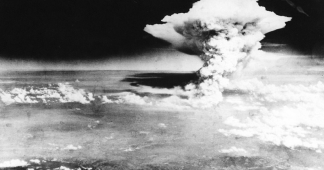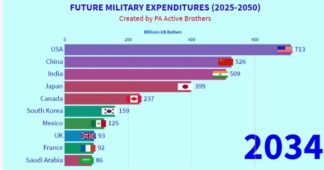By Laura Dubois in Brussels,
David Djambazov in Sofia and Chris Cook in London
Europe’s weapons factories are expanding at three times the rate of peacetime, stretching over 7mn sq metres of new industrial development that represents rearmament on a historic scale.
Building activity at European arms sites has gone into overdrive since Russia’s full-scale invasion of Ukraine in 2022, according to a Financial Times analysis of radar satellite data covering 150 facilities across 37 companies.
The data shows that Europe’s long-promised defence revival, driven by an injection of public subsidies, is beginning to materialise not just in policy rhetoric or spending pledges but also in concrete and steel.
It comes as EU governments argue over how to sustain arms deliveries to Kyiv, as well as rebuilding their own stockpiles, in the face of a potentially wavering US commitment.
Using more than 1,000 radar satellite passes, the FT tracked changes at sites associated with ammunition and missile production, two bottlenecks in the west’s support for Ukraine.
The Sentinel-1 satellites, operated by the European Space Agency, fire radar pulses and record their echoes — known as “backscatter” — that can reveal surface alterations. The data suggests about a third of the sites reviewed showed signs of expansion or construction work.
The scale and spread of the detected work suggests a generational shift in rearmament, moving Europe from just-in-time peacetime production towards building an industrial base for a more sustained war footing.
William Alberque, a senior adjunct fellow at the Asia Pacific Forum and former director of Nato arms control, said: “These are deep and structural changes that will transform the defence industry in the medium to long term.
“Once you’re mass-producing shells, the metals and explosives start flowing, which drops the cost and complexity of missile production.”
Most defence groups declined to comment on the findings, citing security concerns.
Areas marked by changes jumped from 790,000 sq metres in 2020-21 to 2.8mn sq metres in 2024-25, the analysis showed. Photography of these sites confirmed the changes were driven by excavations ahead of works, new buildings, fresh roads being paved and construction.
Among the sites with the biggest expansion was a joint project between German defence giant Rheinmetall and Hungarian state defence company N7 Holding, which has built a vast production site for ammunition and explosives in Várpalota in western Hungary.
Continue reading at archive.ph
We remind our readers that publication of articles on our site does not mean that we agree with what is written. Our policy is to publish anything which we consider of interest, so as to assist our readers in forming their opinions. Sometimes we even publish articles with which we totally disagree, since we believe it is important for our readers to be informed on as wide a spectrum of views as possible.











